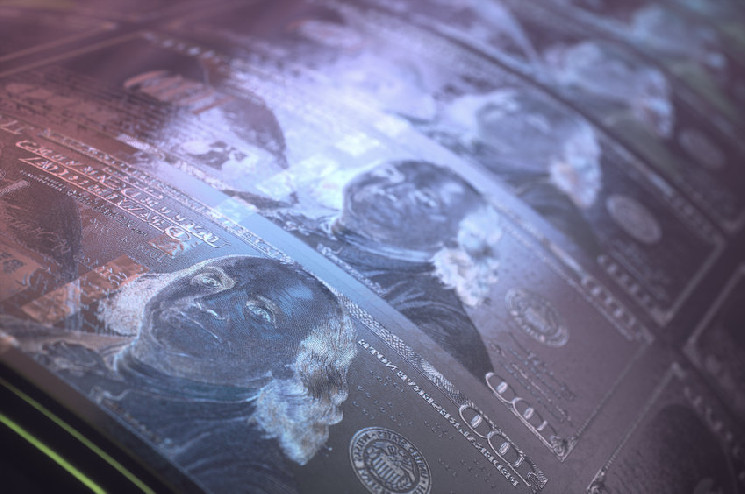Twitter and Square CEO Jack Dorsey has issued a stark warning about hyperinflation. The warning comes after the soaring energy costs have pushed the consumer price index near a 30-year high.
If Dorsey is right about hyperinflation, what would happen to the US economy?
Hyperinflation “Is Happening”
The consumer price index increased slightly more than expected in September amid an ongoing energy crisis. As per a report by the Labor Department, consumer prices overall rose 0.4% in September after rising 0.3% in August, pushing the year-over-year rise to 5.4%.
Following the report, Dorsey, a Bitcoin proponent, warned hyperinflation is “happening.” “Hyperinflation is going to change everything,” he tweeted Friday night.
Hyperinflation is going to change everything. It’s happening.
— jack⚡️ (@jack) October 23, 2021
Dorsey’s tweet attracted both endorsement and criticism. Microstrategy CEO Michael Saylor agreed with him, citing Bitcoin as the “solution”, and Anthony Pompliano iterated the fact that Dorsey has “the most important and accurate data sets in the world to measure true inflation.”
Jack Dorsey and Square sit on one of the most important and accurate data sets in the world to measure true inflation of various goods and services.
— Pomp 🌪 (@APompliano) October 24, 2021
They are likely materially more accurate in their measure of inflation than any data set from government organizations.
However, Virginia Heffernan, journalist, critic, and author, claimed that since Dorsey is making his “own metaverse currency,” his words should not be taken seriously as he stands to benefit from panic surrounding the dollar.
If I were trying to make my own metaverse currency – like Zuckerberg Dorsey Musk whoever – I would also create a panic around the dollar
— Virginia Heffernan (@page88) October 24, 2021
On October 22, Federal Reserve Chairman Jerome Powell also voiced concern regarding inflation, warning that pressures could last longer than expected. At a hearing before the Senate Banking Committee, Powell said:
“Inflation is elevated and will likely remain so in coming months before moderating. As the economy continues to reopen and spending rebounds, we are seeing upward pressure on prices, particularly due to supply bottlenecks in some sectors. These effects have been larger and longer lasting than anticipated, but they will abate.”
Powell had issued a similar warning in late July, saying that inflation is not “exactly transitory“. At the time, he argued that bottlenecks, hiring difficulties, and other constraints continue to pose limitations to the supply chain adjustment, causing inflation to become more persistent.
Bitcoin: A Strong Hedge Against Inflation
In an interview with CNBC last week, billionaire hedge fund manager Paul Tudor Jones also voiced concern regarding inflation, saying it is the number one issue currently facing investors. He also claimed crypto is a better hedge against inflation.
“It would be my preferred one over gold at the moment. Clearly, there’s a place for crypto. Clearly, it’s winning the race against gold at the moment.”
Prior to Jones, JP Morgan revealed that institutional investors are purchasing Bitcoin instead of gold to hedge against inflation.
“The re-emergence of inflation concerns among investors has renewed interest in the usage of Bitcoin as an inflation hedge. Institutional investors appear to be returning to Bitcoin perhaps seeing it as a better inflation hedge than gold.”
JP Morgan added that Bitcoin’s recent rally is largely fueled by inflation concerns. The bank said that the “perception of Bitcoin as a better inflation hedge than gold is the main reason for the current upswing,” adding that investors are shifting away from gold ETFs into Bitcoin funds.
A return on investment (ROI) comparison between gold and Bitcoin might describe why investors believe Bitcoin is a better hedge than gold:
Bitcoin ROI vs Gold vs S&P 500
— RouteToRiches (@RouteToRiches) October 14, 2021
Buy $BTC pic.twitter.com/KSurVy5LSB

Join our Telegram group and never miss a breaking digital asset story.
Hyperinflation Case Study: 1920s Germany
2021 marks exactly 100 years since the onset of hyperinflation in Germany, an economic crisis where prices rose on a daily basis. The aftermath of the First World War and increasing government debt resulted in rapidly increasing inflation in Germany.
However, things started to run out of control when the country defaulted on its reparations payment in 1922. Since the government had to pay worker wages, it decided to print more and more money, which led to hyperinflation. In early 1923, a loaf of bread cost 250 marks. However, by November, a loaf of bread was valued at 200 trillion marks.
While hyperinflation resulted in Germany’s economy falling apart, there were winners. Borrowers found it exceptionally easy to pay their loans off as money had become practically worthless. Farmers also benefitted as their products were still in demand. If US hyperinflation takes hold as Dorsey suggests, could we see the same winners as Germany in the 1920s?
However, people on fixed wages suffered the most as they were unable to afford their basic needs. Those who had their savings in marks were also badly hit as their money became worthless.
Do you think the US is moving toward hyperinflation? Just like Germany 100 years ago, could it default on its debt due to hyperinflation? Let us know what you think in the comments below.
 tokenist.com
tokenist.com
